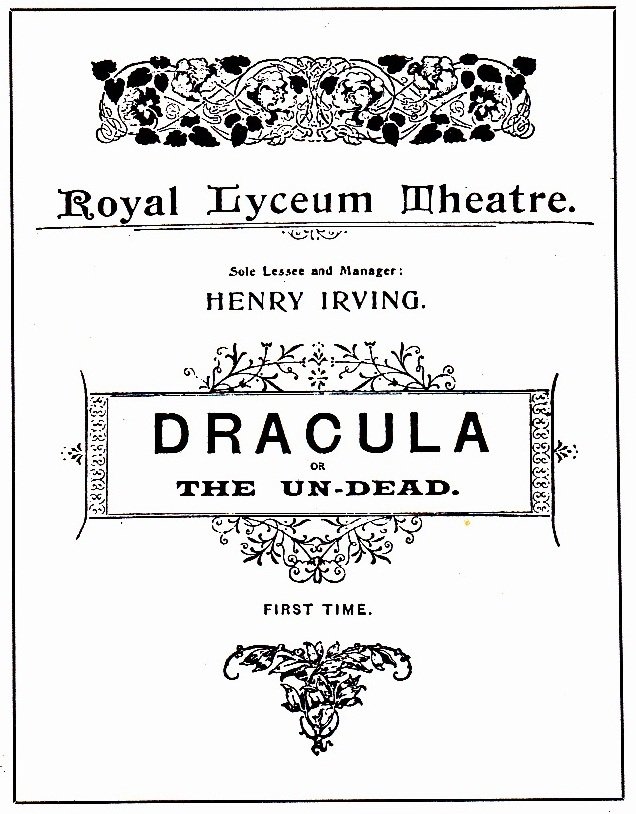Abraham (Bram) Stoker was born November 8th, 1847, in Clontarf on the outskirts of Dublin, Ireland. As a child, Bram was sickly and confined to his bed for much of his first seven years, subject to bloodletting. He spent much of this time watching the lives of family and neighbors from his bedroom window and listening to his mother’s stories of gothic Irish history and legend, likely how his storytelling instincts were cultivated.
Enrolled at Trinity College in 1864, Stoker survived his still-undiagnosed childhood illness, growing into a tall, strong, sociable character and excelling in oratory, debate, and athletics. He received a Bachelor of Arts degree in 1870 and a Master of Arts five years later. As a student Stoker had the rare distinction of serving in the highest office of the College Historical Society and the University Philosophical Society, in one address to the Historical Society, lamenting the curriculum’s neglect of history, oratory, and literature.
He managed the Lyceum Theatre in 1878 where he handled financial records, worked as a publicist, and even stage crew.
In 1890 Stoker visited Whitby and was thought to be inspired by the abbey’s dramatic ruins and the gothic local landscape likely influencing the setting of Dracula. The character Count Dracula even arrives in Whitby by sea.
1899 first American edition, Doubleday & McClure, New York
Program for the 1897 Lyceum Theatre stage production of Bram Stoker's Dracula, or The Undead
Published in 1897, Dracula was well received during its time, growing exponentially after Universal Studios’ 1931 film, cementing Dracula’s place as a cultural icon. Stoker began working on Dracula in 1890 and, despite his demanding schedule at the theater, completed it after seven years. He also penned a play script of the novel as well, which premiered shortly before the novel's publication in 1897 at the Lyceum Theatre under the title Dracula, or The Undead. The play was only performed once, in order to establish his own copyright for such adaptations. The British Library possesses a copy that consists of extracts from the novel's galley proof with Stoker's own handwriting providing direction and dialogue attribution.
The novel received positive reviews but did not make Stoker much money. His version of vampires was considered a new and unique take on the folklore.
Since its publication, Dracula has never been out of print. Dacre Stoker suggests that Stoker's failure to comply with United States copyright law contributed to its enduring status, writing that writers and producers did not need to pay a license fee to use the character.
Stoker was an avid researcher and amassed over 100 pages of notes, including chapter summaries and plot outlines.
Stoker's notes illuminate much about earlier iterations of the novel. Stoker's initial plans for Dracula markedly differ from the final novel. Stoker's earliest notes indicate that Dracula might have originally been intended to be a detective story, with a detective called Cotford and a psychical investigator called Singleton. Another early iteration featured a German professor called Max Windshoeffel "would have confronted Count Wampyr from Styria" while another character would have been slain by a werewolf.
Stoker's handwritten notes about the novel's characters
The notes indicate that the novel's vampire was intended to be a Count, even before he was given the name Dracula. Stoker likely found the name Dracula in Whitby's public library while holidaying there with his wife and son in 1880. On the name, Stoker wrote: "Dracula means devil. Wallachians were accustomed to give it as a surname to any person who rendered himself conspicuous by courage, cruel actions or cunning".




